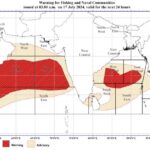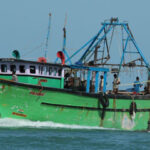Sri Lanka is far behind the bandwagon when it comes to protecting the environment, with our earliest attempts to regulate the use of polythene and single-use plastic only dating back to 2007, five years after the first ban was put into effect by our fellow South Asian country Bangladesh.
Since then, plastic regulation has been so successful in our country that Sri Lanka is now the 5th largest plastic polluter in the world, alongside giant nations like China. Pearl of the Indian Ocean? Perhaps it is time to rename our moniker to Plastic Bead of the Indian Ocean.
And yet many Sri Lankan residents, particularly those who live near beaches, will not find this news surprising. One has to simply walk down any beach in the island to trip over plastic bottles, polythene bags, and any number of other discarded items, most of them single-use.
So where did we go wrong? How did things get progressively worse since our first ban 14 years ago? And what are we doing now?
Our history of failed attempts
In 2007, under the then Minister of Environment Maithripala Sirisena, a ban was brought in prohibiting the use of polythene less than 20 microns in thickness. However, despite implementation, enforcement proved to be difficult, due to the simple fact that you couldn’t measure polythene thickness in raids. Further attempts to pass gazettes were made in 2017, with no lasting effects, and by 2019, when many organisations wrote to the Government requesting action on the matter and a plastic ban, no action was taken.
COVID-19 and the rise of plastics
With the onset of COVID-19 last year, the global situation changed in regards to plastic. On one hand, factories came to a standstill, and plastic and polythene manufacturing stopped for the most part, or was drastically reduced.
On the other hand, when it came to an easily transmissible virus, polythene and plastic were the first logical choice that comes to mind when you think ‘safe and secure, airtight packaging’. The global lockdowns also forced people to stock up on food and essentials, seal organics in airtight packages, and preserve supplies. The most accessible choices for that was once again plastic bags, polythene wrappers, and the like.
Existing waste management was also brought to a standstill with the lockdowns, which meant that this heightened use of plastic was, well, not managed at all. COVID-19 proved to be disastrous as far as plastic regulations go.
The new single-use plastic ban of 2021
In this context, Sri Lanka had proposed a gazette to ban single-use plastics by August 2020, to be implemented from the 1st of January 2021. However, a decision was taken for the gazette to be delayed by three months due to corporate pressure, a highly criticised action in the course of implementing this ban. With that decision, the gazette was scheduled to be passed on the 31st of March 2021, and put into effect from the 1st of April.
The Centre for Environmental Justice (CEJ) called on the Government to not be swayed by ‘certain multinational companies’ in late January, stressing that Sri Lanka was behind in plastic regulation and noting the drastic effect our country has on the environment.
Corporations protested to this in turn that the ban aims to do away with single-use plastic packaged products, in particular sachet items, with no suggestions to alternatives, or mentions as to what to do with existing stocks. Corporations lobbied for the three-month extension to be further lengthened to one year, however, they were not successful. The gazette was passed as scheduled on the 31st of March and put into effect on the 1st of April 2021.
The new exceptions that outnumber the banned items
While this in itself seems like good news, and a win for all environmentalists, ocean lovers, and in fact anyone with any love for the world, one has to really look at how much (or rather, how little) this ban actually covers, in order to start questioning it.
For purposes of reference, the Section 23W(1)(a) of the National Environmental Act, No. 47 of 1980 states:
By this Order, with effect from March 31st, 2021, prohibit the use of-
(a) Polyethylene terephthalate (PET) or polyvinyl chloride (PVC) material for packing agrochemicals used for any process, trade or industry; and
(b) any plastic item specified herein for any process, trade or industry:-
(i) Sachets having less than or equal to a net volume of 20ml/ net weight of 20g (except for packing food and
medicines).
(ii) Inflatable toys (except balloons, balls, water floating/pool toys and water sports gear).
(iii) Cotton buds with plastic stems (except plastic cotton buds used for medical/clinical treatment).
Highlighting the (many) problems that come with this ban, if we’re to take it as a point-by-point rebuttal:
(a) Polyethylene terephthalate (PET) or polyvinyl chloride (PVC) material for packing agrochemicals are significantly less, and mostly apply for pesticides only.
(b) (i) Sachets having less than or equal to a net volume of 20ml/ net weight of 20g has given rise to the question, what if product manufacturers introduced 25ml/25g sachets?
(except for packing food and medicines) excludes a large share of the sachets on the current market. In fact, through a survey done by The Pearl Protectors advocacy, they noted that 56% of all sachets in the market are, in fact, food and medicine.
(ii) Inflatable toys (except balloons, balls, water floating/pool toys and water sports gear) quite simply put we would rather have a list of inclusions than exclusions for this particular section. The purpose of this section eludes us.
(iii) Cotton buds with plastic stems (except plastic cotton buds used for medical/clinical treatment) is once again vague, could be exploited, and has a large possibility of hampering any future legal action to be taken against any future cotton bud manufacturer.
While the purpose of this clause seems to be banning sachets entirely, the vagueness has left the doors of possibilities wide open for anyone looking for a loophole. In very candid terms, one does not have to even look too hard to find a loophole. Which leaves the question: what does this ban actually do? According to The Pearl Protectors, it banned a whopping 30% of sachets under 20ml/20g in the market and none above that amount.
Adding to that is the fact that while the law plans to raid and apprehend anyone not compliant with the above, they are extending (another!) grace period for existing stocks to deplete. Since there is no fixed time for stocks to finish, and arguments can be brought for fast depletion or slow, the blurred lines and grey areas only further detract from enforcing this particular ban.
What should we be doing?
However, the CEJ does stress that this ban is but the first step and that they are looking into banning the use of food and medicinal sachets in the future. Whether that future is near or far remains to be seen, but the sentiment does provide a positive outlook.
Laws and Gazettes cannot fix everything, particularly if parties are at war with each other over a matter of common interest to all. If multinational companies are dedicating their time to finding loopholes and exploiting plastic bans instead of looking toward more economical alternatives, and if authorities are focused on banning more and more products instead of introducing sustainability to the economy, progress will be slow.
Similarly, the public consumer cannot blame large companies for all the plastic waste. It is us who consume it, us who (generally) don’t dispose of it properly, and us who keep the demand for it high. However, companies are producing it, and pay no attention to recycling when they can just make more. The cycle of change has to start simultaneously. It is the duty of all parties involved to do what’s best for the environment and best for the world.
Where can we learn from?
Globally, Bangladesh has kick-started plastic bans, as we mentioned earlier, as early as 2002. Now, the leading continent for plastic bans is Africa, followed closely by Europe. India and China are leading Asia in terms of plastic bans, while in Europe taxes on plastic have drastically reduced their usage, sometimes up to 90%. This is one alternative Sri Lanka should consider if outright bans prove ineffective.
In the US, while some states have banned plastic in certain counties, and others have state-wide bans on plastic, yet more states have listened to lobbying corporations and banned future plastic bans. This is something Sri Lanka definitely shouldn’t consider.
Plastic bans may take many forms around the globe, and perhaps Sri Lanka is late to the party. But it’s always a good day to take a look at the world we live in and start to change ourselves for a better tomorrow. Laws may come and go, but duty preserves.





Leave a Reply